Finding what fits
Choosing the right replacement windows for your home is not a task to be taken lightly. These windows play a vital role in both the aesthetics and energy efficiency of your living space. In this step-by-step guide, we will navigate the complex world of replacement windows, helping you make an informed decision.
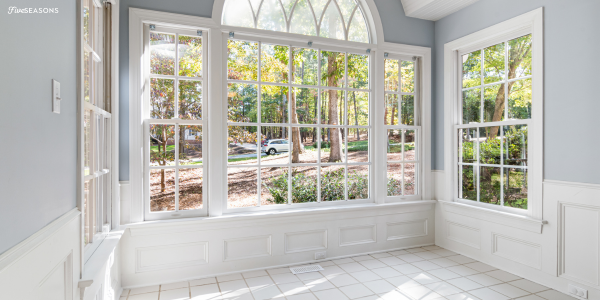
Step 1: Assess Your Needs
Before diving into the vast array of replacement window options available on the market, it's crucial to start your decision-making process by taking a close and thoughtful look at your specific needs and requirements. This initial step serves as the foundation for the entire selection process and will help you align your choices with your unique circumstances and priorities. To guide you in this essential step, consider factors such as:
- Functionality: Begin by determining the primary purpose your replacement windows should serve. Are you seeking windows primarily for ventilation, allowing fresh air to circulate throughout your home? Or do you want windows that will flood your interior spaces with natural light, creating a brighter and more inviting atmosphere? Understanding the functional role of your windows will help you make choices that cater to your specific needs.
- Location: Take note of where these replacement windows will be installed within your home. Different areas may require windows with distinct characteristics. For example, windows in your bedroom might prioritize noise reduction and privacy, while those in your living room may emphasize aesthetics and a clear view of the outdoors. Analyzing the location of each window will help you tailor your selections accordingly.
- Budget: Establishing a clear and realistic budget early in the decision-making process is crucial. Replacement windows come in a wide range of price points, and knowing your budget constraints will help you narrow down your options. Keep in mind that while it's tempting to cut costs, investing in quality windows can yield long-term benefits in terms of energy efficiency, durability, and aesthetics.
By carefully considering these factors before delving into the world of replacement windows, you'll lay a solid foundation for your decision-making process. This preliminary analysis will not only help you narrow down your options but also ensure that the windows you ultimately select are tailored to your specific needs, preferences, and circumstances. Remember that well-informed decisions at this stage will lead to greater satisfaction with your replacement windows in the long run.
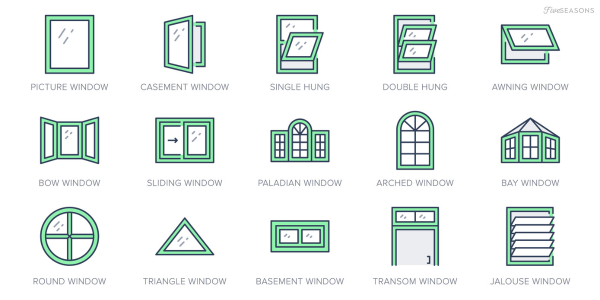
Step 2: Understand Window Types
When it comes to selecting replacement windows for your home, you'll quickly discover a diverse array of window types, each with its own set of unique characteristics. The choice of window type not only affects the functionality of the window but also plays a significant role in shaping the aesthetic appeal of your home. To help you better understand your options, let's delve into the most common types of replacement windows available:
- Single-Hung and Double-Hung Windows:
- Description: Single-hung and double-hung windows are classic choices for many homes. They both feature a vertical sliding design, allowing you to open the window by moving one or two sashes (movable panels) vertically within the frame.
- Advantages: These windows are known for their timeless appearance and straightforward operation. They are also energy-efficient due to their tight seal when closed.
- Considerations: Single-hung windows have only one operable sash, typically the bottom one, while double-hung windows offer the flexibility of opening both the top and bottom sashes for improved ventilation and ease of cleaning.
- Casement Windows:
- Description: Casement windows are hinged on one side and open outward like a door. They are operated using a crank handle and provide unobstructed views when fully opened.
- Advantages: Casement windows offer excellent ventilation due to their wide opening. They provide an airtight seal when closed, enhancing energy efficiency. Their sleek, modern appearance complements contemporary architectural styles.
- Considerations: Make sure there's enough clearance outside for the window to swing open fully.
- Slider Windows:
- Description: Slider windows, also known as gliding windows, open horizontally by sliding one sash past the other. They are a great choice for areas with limited vertical space.
- Advantages: Slider windows are easy to operate and maintain. They offer unobstructed views and good ventilation when one sash is slid open.
- Considerations: Ensure the tracks are kept clean for smooth operation.
- Awning Windows:
- Description: Awning windows are hinged at the top and open outward from the bottom, resembling an awning. They are designed to provide ventilation even during light rain.
- Advantages: Awning windows allow for excellent airflow while keeping rain out. They are a practical choice for bathrooms and kitchens where moisture control is essential.
- Considerations: These windows are less common in certain architectural styles, so they may not be suitable for all homes.
- Bay and Bow Windows:
- Description: Bay and bow windows are distinctive in that they protrude outward from the home's exterior wall. They typically consist of multiple windows joined together to create a curved or angled structure.
- Advantages: These windows not only add a touch of architectural elegance to your home but also create additional interior space, perfect for creating cozy nooks or window seats. They offer panoramic views of the outdoors.
- Considerations: Bay and bow windows require sufficient wall space for installation and may be more complex to install compared to standard windows.
Each of these replacement window types comes with its own set of advantages and considerations. To choose the right type for your home, consider your functional needs, aesthetic preferences, and the specific architectural characteristics of your property. By selecting the right window type, you can enhance both the functionality and visual appeal of your home's interior and exterior.

Step 3: Choose the Right Materials
When choosing replacement windows for your home, one of the most critical decisions you'll make revolves around the material used to construct them. Window materials have a profound impact on various aspects, including durability, energy efficiency, and maintenance requirements. Here, we'll delve into the most common window materials, shedding light on their characteristics and considerations:
- Vinyl:
- Description: Vinyl windows are constructed from polyvinyl chloride (PVC) and have become incredibly popular in recent years. They are known for their versatility, affordability, and low maintenance requirements.
- Advantages: Vinyl windows are highly resistant to moisture, making them ideal for humid climates. They are energy-efficient, thanks to their excellent insulation properties. Moreover, they are available in various styles and colors to suit your home's aesthetics.
- Considerations: While vinyl windows are generally low maintenance, they can become discolored over time due to exposure to UV rays. However, this doesn't affect their functionality.
- Wood:
- Description: Wood windows exude classic elegance and charm. They are crafted from various types of wood, such as oak, pine, or mahogany.
- Advantages: Wood windows are renowned for their timeless beauty and the warmth they add to a home's interior. They can be customized with various stains and finishes to match your decor. Wood is also an excellent natural insulator.
- Considerations: Wood requires regular maintenance, including painting or staining, to protect it from the elements. It is susceptible to moisture and may rot if not properly cared for. Additionally, wood windows tend to be more expensive than other materials.
- Aluminum:
- Description: Aluminum windows are durable and corrosion-resistant, thanks to their aluminum frame.
- Advantages: Aluminum windows are low maintenance and can withstand harsh weather conditions, making them an excellent choice for coastal areas. They are also slim and can support larger glass panes, allowing for expansive views.
- Considerations: Aluminum is not as energy-efficient as other materials, as metal conducts heat and cold. To improve energy efficiency, some aluminum windows include thermal breaks, which reduce heat transfer. Additionally, aluminum windows may be noisier than other options due to their metal frame.
- Fiberglass:
- Description: Fiberglass windows are made from thin strands of glass fibers embedded in a resin matrix.
- Advantages: Fiberglass windows are exceptionally durable and can withstand extreme temperatures without warping or corroding. They are energy-efficient, offering excellent insulation properties. Fiberglass windows are also low maintenance and resistant to moisture.
- Considerations: Fiberglass windows tend to be more expensive than vinyl but can offer long-term savings due to their energy efficiency and durability. They are an excellent choice for climates with temperature extremes.
When choosing the right window material, it's essential to consider your local climate, your budget, and your willingness to perform maintenance. Each material has its unique set of advantages and considerations, and what may be the best choice for one homeowner might not be the ideal option for another. By weighing these factors carefully, you can make an informed decision that aligns with your priorities and ensures that your replacement windows serve your home well for years to come.
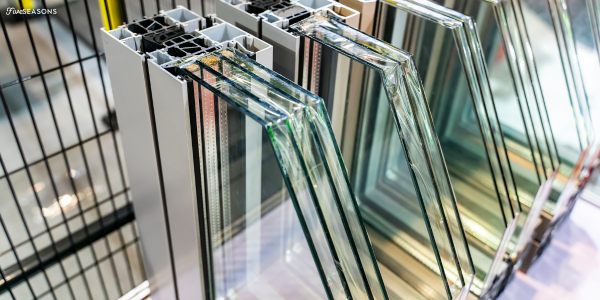
Step 4: Consider Energy Efficiency Ratings
In today's environmentally conscious world, energy efficiency has become a paramount consideration when selecting replacement windows for your home. Not only does energy-efficient glazing contribute to reducing your carbon footprint, but it can also lead to significant cost savings over time by lowering your energy bills. Step 4 of our guide focuses on "Consider Energy Efficiency Ratings," and here, we will delve deeper into the critical features and benefits of energy-efficient replacement windows:
- Low-E Glass (Low Emissivity):
- Description: Low-E glass is a vital component of energy-efficient windows. It features a microscopically thin, transparent coating applied to the glass surface. This coating is designed to reflect heat and ultraviolet (UV) rays while allowing visible light to pass through.
- Advantages: Low-E glass helps regulate indoor temperatures by preventing heat from escaping during the winter and blocking unwanted heat gain in the summer. This translates to improved year-round comfort and reduced reliance on heating and cooling systems.
- Considerations: Low-E coatings are available in various degrees, so you can choose the level of insulation that best suits your climate and specific needs.
- Double or Triple Glazing:
- Description: Double or triple glazing refers to the number of glass panes in a window unit, separated by insulating spaces or gas fills (typically argon or krypton).
- Advantages: Multiple layers of glass significantly enhance a window's insulation properties. The air or gas between the panes acts as a thermal barrier, reducing heat transfer between the interior and exterior of your home. This results in improved energy efficiency and a reduction in drafts.
- Considerations: The number of layers and the type of gas used can affect the window's overall efficiency. Triple glazing, for instance, provides higher insulation but may be unnecessary in milder climates.
- Energy Star Certification:
- Description: The Energy Star certification is a reputable label indicating that a product, including windows, meets or exceeds energy efficiency standards set by the U.S. Environmental Protection Agency (EPA).
- Advantages: Windows bearing the Energy Star label have undergone rigorous testing to ensure their energy performance. They are designed to reduce energy consumption, lower greenhouse gas emissions, and save you money on energy bills. Choosing Energy Star-certified windows is a reliable way to identify energy-efficient options.
- Considerations: While Energy Star certification is a valuable indicator, it's still important to consider your specific needs and climate when selecting windows. Certain regions may benefit from specialized glazing options beyond the basic certification.
By prioritizing energy efficiency in your window selection, you not only contribute to a greener and more sustainable environment but also enjoy a more comfortable and cost-effective home. Energy-efficient windows can lead to a more consistent indoor temperature, reduced reliance on heating and cooling systems, and lower energy bills, all while minimizing your carbon footprint. As you embark on the journey to choose replacement windows, remember that making informed choices in terms of energy efficiency will have long-lasting benefits for your home and the planet.
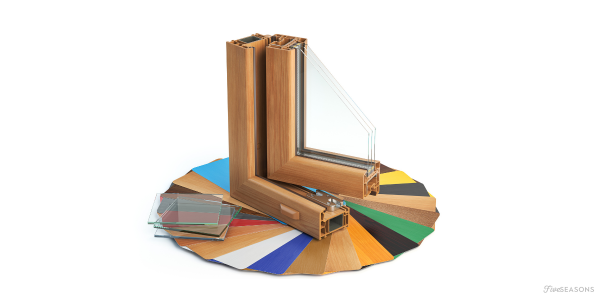
Step 5: Explore Style Considerations
While functionality and energy efficiency are paramount, the aesthetic appeal of your replacement windows also plays a significant role in enhancing your home's overall charm and character. Here, we'll explore various style considerations that will help you select windows that not only serve their purpose but also seamlessly blend with your home's architectural style and interior design:\
- Frame Color:
- Description: The frame color of your replacement windows is a visible and essential element that contributes to your home's exterior aesthetics. This color should harmonize with your existing exterior color palette.
- Advantages: By choosing a frame color that complements your home's exterior, you can create a cohesive and visually appealing appearance. Whether you opt for classic white frames, earthy tones, or bold, contrasting colors, the right choice can significantly impact your home's curb appeal.
- Considerations: Take into account the existing color scheme of your home, as well as any future exterior renovations or painting plans. Sample frame colors against your home's façade to see how they appear in different lighting conditions.
- Grille Patterns:
- Description: Grille patterns, also known as muntins or window grids, are decorative elements that divide a window's glass into smaller sections. They can add character, mimic historical window designs, and create visual interest.
- Advantages: Grilles offer versatility in terms of style. They can be customized to suit your preferences, whether you desire a traditional colonial look with evenly spaced grids or a more contemporary appearance with minimalistic or no grids at all.
- Considerations: Consider the architectural style of your home when selecting grille patterns. For instance, colonial-style homes typically feature symmetrical grids, while modern residences often favor clean, unobstructed window designs.
- Hardware Options:
- Description: Window hardware includes handles, locks, hinges, and other functional components. These elements may seem small, but they play a significant role in both the functionality and aesthetics of your windows.
- Advantages: Selecting hardware that matches your interior design can enhance the overall cohesiveness of your home's décor. You can choose from a variety of finishes, such as brushed nickel, oil-rubbed bronze, or polished chrome, to achieve the desired look.
- Considerations: Think about the overall style and color palette of your interior spaces. The hardware you choose should complement other fixtures and furnishings in the room. Additionally, consider factors like ease of use and security when selecting window hardware.
When exploring style considerations for your replacement windows, it's essential to strike a balance between aesthetics and functionality. Your choices should not only enhance your home's exterior beauty but also provide a seamless transition to the interior spaces. By carefully considering frame colors, grille patterns, and hardware options, you can create a cohesive and visually appealing design that reflects your personal style and complements your home's architectural character. Ultimately, this attention to detail will result in replacement windows that elevate both the functionality and visual appeal of your living spaces.
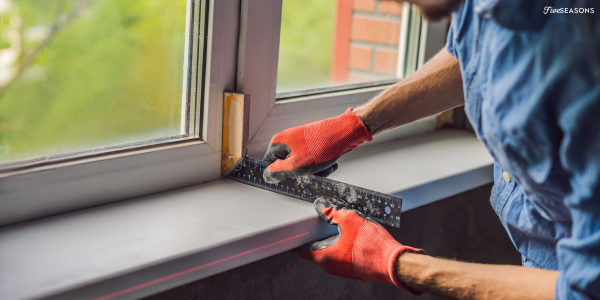
Step 6: Research Installation
While selecting the right replacement windows is undoubtedly essential, the quality of the installation process is equally crucial to ensure that your investment pays off in terms of energy efficiency, durability, and long-term satisfaction. Here, we'll delve into the importance of proper installation and offer valuable insights into finding the right contractor for your window replacement project:
- The Significance of Proper Installation:
- Description: Proper installation is the linchpin that holds the entire replacement window project together. It is the process of removing the old windows and installing the new ones in a way that ensures they are secure, watertight, airtight, and energy-efficient.
- Advantages: Properly installed windows provide numerous benefits. They maximize energy efficiency, preventing drafts and leaks that can lead to energy waste and higher utility bills. Quality installation also ensures that your windows will function correctly and last for many years, ultimately protecting your investment.
- Finding a Reputable Contractor:
- Description: The key to a successful window replacement project lies in selecting a reputable and experienced contractor who specializes in window installation.
- Advantages: A professional contractor possesses the expertise and equipment needed to ensure precise measurements, proper fit, and a secure installation. They can identify and address any potential issues, such as rot or structural damage, during the installation process.
- Considerations: When researching contractors, consider factors such as their years of experience, certifications, and customer reviews. Seek referrals from friends, family, or neighbors who have had successful window replacement projects. Additionally, verify that the contractor is licensed and insured, as this ensures protection in case of accidents or damage during the installation.
- The Installation Process:
- Description: A typical window replacement process involves several steps, including removal of old windows, preparation of the window opening, installation of the new windows, insulation, sealing, and finishing touches.
- Advantages: A professional installer will follow a precise installation process to ensure a watertight and airtight fit. They will also properly insulate around the window frame, preventing heat or cold air from escaping or infiltrating your home.
- Considerations: Ask potential contractors about their installation process and timelines. A reputable contractor should provide you with a clear project plan, including start and completion dates, as well as details on any necessary permits or inspections.
- Post-Installation Inspection:
- Description: After installation, it's essential to inspect the windows to ensure they meet your expectations and function correctly. This includes testing the operation of the windows, checking for any visible gaps or leaks, and verifying that the hardware and locks work as intended.
- Advantages: A thorough inspection helps identify any issues that may need to be addressed promptly, preventing future problems or potential damage.
- Considerations: Discuss the post-installation inspection process with your contractor to ensure that they will address any concerns or discrepancies.
While selecting the right windows is crucial, entrusting the installation to a reputable and experienced contractor ensures that your investment in energy efficiency, aesthetics, and comfort is fully realized. By conducting thorough research, choosing the right contractor, and overseeing the installation process, you can enjoy the long-lasting benefits of well-installed replacement windows in your home.

Step 7: Get Quotes and Compare
In the final step of our comprehensive guide to choosing the right replacement windows, "Step 7: Get Quotes and Compare," we explore the crucial process of gathering quotes from various suppliers and contractors. This step is essential to ensure that you make a well-informed decision regarding your replacement windows. Here's an in-depth look at why this step is critical and how to go about it effectively:
- The Importance of Gathering Quotes:
- Description: Gathering quotes from multiple suppliers and contractors is essential for several reasons. First and foremost, it allows you to obtain a clear understanding of the cost involved in your replacement window project. Additionally, it provides insights into the warranties offered, the quality of materials, and the scope of installation services provided by different companies.
- Advantages: By obtaining quotes, you can make an informed comparison of the various options available to you. This enables you to select the supplier or contractor that best aligns with your budget, preferences, and project requirements.
- Requesting Quotes from Suppliers:
- Description: Suppliers typically provide quotes for the cost of the replacement windows themselves. It's essential to communicate your specific window requirements, including the type, material, size, and any additional features you desire.
- Advantages: Obtaining quotes from window suppliers helps you understand the cost of the windows themselves. It allows you to assess the price differences between various window types, materials, and brands.
- Requesting Quotes from Contractors:
- Description: When requesting quotes from contractors, you're not only interested in the cost of the windows but also the cost of installation services. Provide details about your window requirements, including the number of windows, any specific challenges with installation, and your desired timeline.
- Advantages: Gathering quotes from contractors helps you understand the complete project cost, including installation. It allows you to assess how different contractors approach the project, the quality of their workmanship, and the level of service they offer.
- Comparing Pricing:
- Description: Once you have collected quotes, take the time to compare pricing from different suppliers and contractors. Pay close attention to any variations in costs and seek clarification on any discrepancies.
- Advantages: Comparing pricing helps you identify competitive offers and potential cost savings. It ensures that you select a supplier or contractor that offers fair and reasonable pricing for the quality of materials and services provided.
- Assessing Warranties and Services:
- Description: In addition to cost, thoroughly review the warranties offered by suppliers and contractors. Consider the length of warranties for both the windows and installation services. Also, assess the level of customer support and post-installation services provided.
- Advantages: Understanding warranties and services ensures that you are protected in the event of defects or issues with the windows or installation. It also provides insight into the commitment of the supplier or contractor to customer satisfaction.
- Taking Your Time:
- Description: It's essential not to rush through the process of gathering quotes and making a decision. Take your time to review and compare the information you've collected.
- Advantages: By being patient and thorough, you reduce the risk of making hasty decisions that could lead to dissatisfaction with the final outcome of your replacement window project.
By diligently gathering quotes from multiple suppliers and contractors, you can gain a comprehensive understanding of costs, warranties, and services. This informed decision-making process ensures that you select the best combination of materials, installation services, and pricing to meet your specific needs and preferences. Ultimately, taking your time in this step will lead to greater satisfaction with the entire replacement window project.
consider carefully
Choosing the right replacement windows for your home is a multifaceted decision that should not be taken lightly. By following this step-by-step guide and considering factors like window types, materials, energy efficiency ratings, and style considerations, you can ensure that your replacement windows not only enhance the aesthetics of your home but also improve its energy efficiency and functionality. Making an informed choice will ultimately lead to a more comfortable and beautiful living space.
In the end, remember that replacement windows are an investment in your home's future, so take the time to select the perfect windows that meet your needs and preferences.



